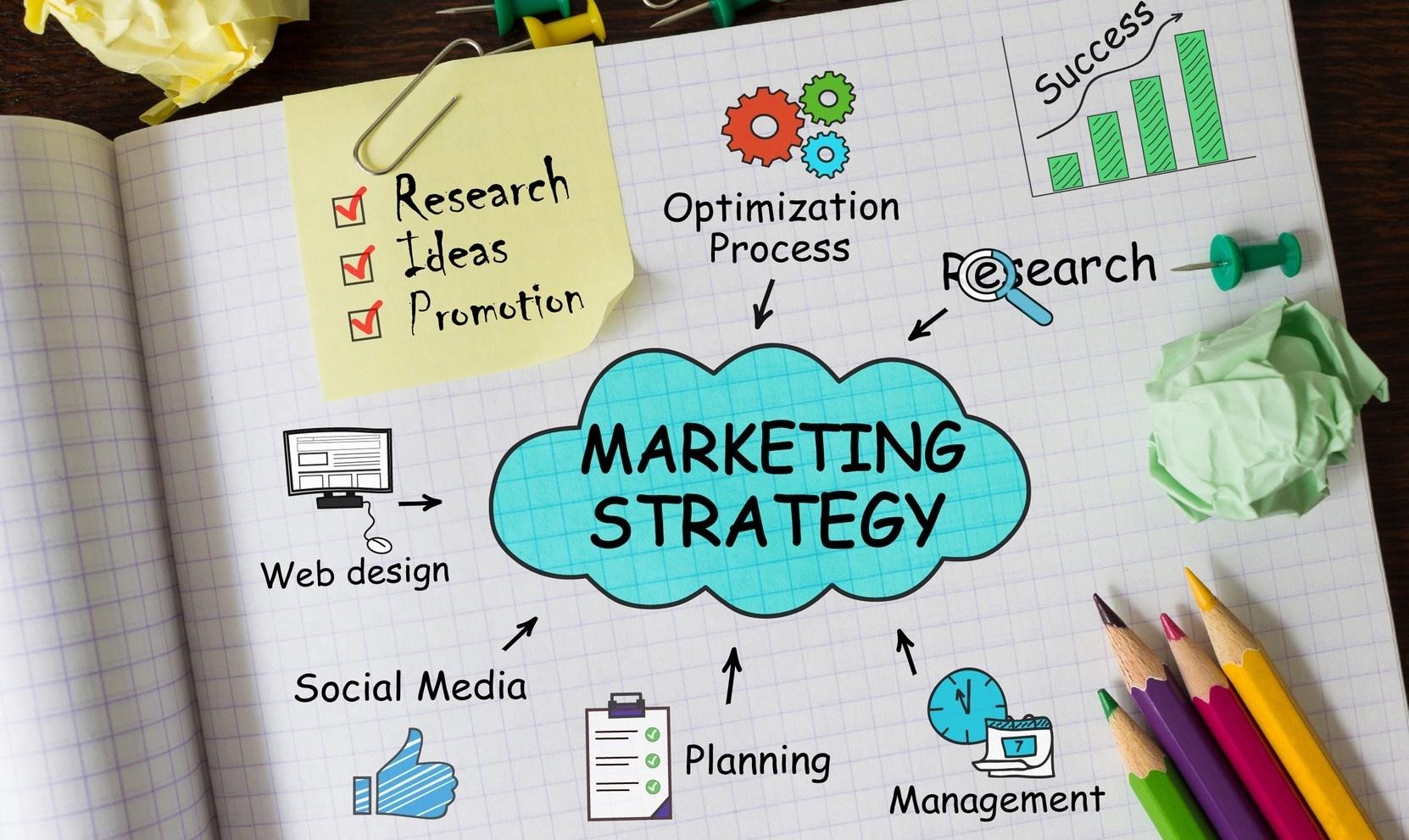HOW TO
How to Reprogram Your Mind
Published
1 year agoon
By
Juliet Udoh
Reprogramming our mind is important as our subconscious mind is the key to success, so if you want to live the life you desire then it is time to decide, commit and resolve.
Reprogramming your mind involves reshaping your thoughts, beliefs, and behaviours to create positive change and improve your mindset. Here are some strategies that can help:

- Identify Limiting Beliefs: Start by becoming aware of any negative or limiting beliefs that may be holding you back. These beliefs can be ingrained from past experiences or societal conditioning. Challenge these beliefs by questioning their validity and replacing them with positive, empowering beliefs.
- Practice Positive Affirmations: Affirmations are positive statements that help rewire your thinking patterns. Repeat affirmations that align with your desired mindset and goals. For example, if you want to cultivate self-confidence, affirmations like “I am confident and capable” can reinforce positive self-perception.
- Visualization: Visualize yourself successfully achieving your goals and embodying the mindset you desire. Create vivid mental images of your desired outcomes and regularly visualize yourself experiencing them. This technique can help reprogram your mind by reinforcing positive expectations and creating a sense of belief in your abilities.

4. Surround Yourself with Positive Influences: Surrounding yourself with positive and supportive people can have a significant impact on your mindset. Seek out individuals who uplift and inspire you, and limit exposure to negative influences. Engage in activities that bring you joy and cultivate a positive environment.
5. Practice Mindfulness and Meditation: Mindfulness and meditation help you become aware of your thoughts and emotions without judgment. Regular practice can help you observe negative thought patterns and redirect your focus towards more positive and productive thinking.
6. Reframe Negative Thoughts: Challenge negative thoughts and reframe them in a more positive and constructive light. For example, if you catch yourself thinking, “I always fail at everything,” reframe it as, “I am capable of learning from my experiences and growing stronger.”
7. Set Realistic Goals: Set achievable and realistic goals that align with your values and aspirations. Break them down into smaller, manageable steps, and celebrate your progress along the way. This approach helps build a sense of accomplishment and reinforces positive thinking.
8. Continuous Learning and Personal Development: Engage in activities that foster personal growth and learning. Read books, listen to podcasts, attend workshops or seminars, and seek out knowledge in areas that interest you. Expanding your knowledge can broaden your perspective and provide new insights.
Remember that reprogramming your mind takes time and consistent effort. Be patient with yourself and embrace the journey of personal growth. It can be helpful to seek support from a therapist, coach, or mentor who can provide guidance and assistance along the way.

Jewellery, a timeless accessory, can elevate your style and express your individuality. However, with countless options available, how to choose jewelry for your personal style can be overwhelming.
To choose jewelry for your personal style, start with understanding your personal style. Are you classic, bohemian, minimalist, or edgy? Once you know your style, you can start selecting pieces that reflect your personality.
How to choose jewelry for your personal style also involves considering your skin tone. Cool tones look best in silver and white gold, while warm tones complement gold and rose gold.
The type of metal you choose is another important factor. Gold is a classic and versatile option, while silver is modern and edgy. Rose gold is romantic and feminine, and platinum is luxurious and durable.
How to choose jewelry for your personal style requires considering the occasion, your face shape, and your outfit. Whether you’re looking for everyday pieces or statement jewelry, there’s a perfect piece out there for you.
By following these tips, you can confidently select jewelry that enhances your natural beauty and reflects your unique style.
Understanding Your Personal Style
Before diving into the world of jewelry, it’s essential to understand your personal style.
- Classic: If you prefer timeless elegance, opt for classic pieces like pearl necklaces, delicate gold chains, and simple stud earrings.
- Bohemian: Embrace your free-spirited side with layered necklaces, chunky bracelets, and earthy tones.
- Minimalist: Keep it simple with sleek, minimalist pieces like dainty rings and delicate pendants.
- Edgy: Experiment with bold, statement pieces like oversized earrings, chunky rings, and edgy necklaces.
Considering Your Skin Tone
Your skin tone plays a significant role in choosing jewelry that complements your complexion.
- Cool Tones: If you have cool undertones, silver, white gold, and platinum jewelry will enhance your natural beauty.
- Warm Tones: If you have warm undertones, gold and rose gold jewelry will complement your skin tone.
Selecting the Right Metals
The type of metal you choose can significantly impact your overall look.
- Gold: Gold is a classic and versatile metal that complements a wide range of styles.
- Silver: Silver is a modern and edgy metal that pairs well with contemporary outfits.
- Rose Gold: Rose gold is a romantic and feminine metal that adds a touch of warmth to your look.
- Platinum: Platinum is a durable and luxurious metal that is perfect for special occasions.
Choosing the Right Earrings
Earrings can instantly elevate your look. Consider the following factors when selecting earrings:
- Face Shape: Choose earrings that complement your face shape. For example, long earrings can elongate a round face, while stud earrings can accentuate a square face.
- Occasion: The occasion will determine the appropriate style of earrings. For a casual look, opt for simple studs or hoops. For a formal event, consider a chandelier or drop earrings.
Selecting the Right Necklaces
Necklaces can add a touch of elegance or a bold statement to your outfit. Consider the following factors when selecting necklaces:
- Neckline: Choose a necklace that complements your neckline. For example, a V-neckline looks great with a pendant necklace, while a high neckline pairs well with a choker.
- Outfit: The style of your outfit will determine the appropriate necklace. A casual outfit can be elevated with a simple pendant necklace, while a formal dress can be accessorized with a statement necklace.
Selecting the Right Bracelets
Bracelets can add a touch of sparkle to your wrist. Consider the following factors when selecting bracelets:
- Wrist Size: Choose a bracelet that fits comfortably on your wrist.
- Stacking: Experiment with stacking different bracelets to create a unique look.
- Occasion: The occasion will determine the appropriate style of bracelet. For a casual look, opt for a simple bangle or cuff bracelet. For a formal event, consider a delicate chain bracelet with gemstones.
Selecting the Right Rings
Rings can add a touch of glamour to your hands. Consider the following factors when selecting rings:
- Finger: Choose a ring that fits comfortably on your finger.
- Stacking: Experiment with stacking different rings to create a unique look.
- Occasion: The occasion will determine the appropriate style of ring. For a casual look, opt for a simple band ring. For a formal event, consider a cocktail ring or engagement ring.
You can choose jewelry that complements your personal style and enhances your natural beauty just by following the steps. Remember, the most important thing is to have fun and experiment with different styles to find what works best for you.
Visit here for more beauty tips.

Learn how to promote your music effectively in today’s dynamic digital landscape, where countless platforms and tools empower musicians to reach global audiences.
First and foremost, understanding how to promote your music requires a strategic approach that combines social media presence, networking, and consistent content creation.
Moreover, successful artists recognize that learning how to promote their music involves building genuine connections with fans through regular engagement and behind-the-scenes content.
Furthermore, as streaming platforms continue to evolve, mastering how to promote your music demands familiarity with playlist pitching, algorithm optimization, and cross-platform marketing.
In conclusion, whether you’re an emerging artist or an established musician, discovering innovative ways to promote your music enables you to cut through the noise and connect with your target audience meaningfully.
Let’s explore the essential strategies that will help you amplify your musical journey and build a dedicated fan base.
1. Build a Strong Online Presence
- Create a website. A website is your digital hub. It should include your bio, music, tour dates, contact information, and a blog.
- Engage with your audience on platforms like Instagram, TikTok, Facebook, and Twitter. Share your music, and behind-the-scenes content, and interact with fans.
- Build an email list to directly connect with your fans. Send regular updates, exclusive content, and early access to new releases.
2. Leverage Music Streaming Platforms
- Use platforms like Spotify, Apple Music, and YouTube Music to make your music accessible to a wider audience.
- Curate playlists featuring your music and other artists you admire.
- Engage with fans by responding to comments and messages on your artist profile.
3. Network with Other Musicians and Industry Professionals
- Collaborating with other artists can help you reach new audiences and gain exposure.
- Attend music conferences, festivals, and showcases to connect with industry professionals.
- Join music communities: Participate in online forums and communities to discuss music, share tips, and connect with other musicians.
4. Utilize Digital Marketing Tools
- Paid advertising: Use platforms like Google Ads and Facebook Ads to target specific audiences.
- Social media advertising: Promote your music on social media platforms to reach a wider audience.
- Email marketing: Send targeted email campaigns to your subscribers.
5. Perform Live
- Book gigs and play live shows at local venues and festivals.
- Build a fan base: Use live performances to connect with your audience and build a loyal following.
- Sell merchandise: Sell merchandise at your shows to generate additional revenue and promote your brand.
6. Public Relations
- Pitch to music bloggers and journalists: Send press releases and music to music bloggers and journalists to get reviews and features.
- Build relationships with music bloggers: Build relationships with music bloggers by commenting on their posts and sharing their content.
7. Use Music Video Platforms
- Create music videos: Music videos can help you reach a wider audience and increase your visibility.
- Upload to YouTube: Upload your music videos to YouTube and optimize them for search.
- Promote on social media: Share your music videos on social media to generate buzz.
When it comes to music, consistency is key. Keep creating new music, engaging with your fans, and promoting your work. By following these tips, you can increase your visibility and build a successful music career.
For more updates, check here.
BUSINESS
How To Create A Winning Marketing Strategy For A Small Business In Nigeria
Published
1 month agoon
October 14, 2024
Creating an effective marketing strategy for a small business challenges even experienced entrepreneurs. Most struggle to connect with their target audience despite trying various approaches. We’ll explore proven tactics and real-world examples to help you succeed.
A well-documented marketing strategy for a small business directly impacts your growth potential. However, many owners feel overwhelmed by conflicting advice and endless tactical options. Whether you’re launching a startup or running an established company, you need clear direction.
Top marketing experts have contributed their insights to simplify this process. Instead of presenting an exhaustive list of techniques, we’ve distilled their knowledge into actionable guidance. This focused approach helps you develop a marketing strategy for a small business that actually works.
Our guide cuts through the noise to deliver essential information. We’ll show you how to:
- Identify your most valuable marketing channels
- Create compelling messages that resonate with customers
- Measure results effectively
- Adjust your approach based on data
By following these expert-backed strategies, you’ll build a solid foundation for your marketing efforts and achieve better results.
What is a Marketing Strategy?
A marketing strategy is a comprehensive plan that outlines a company’s approach to reaching potential customers and converting them into loyal repeat buyers.
A well-crafted strategy defines clear goals and objectives, incorporates a unique value proposition, conducts thorough market research, identifies the target market, develops effective messaging, and selects the most suitable marketing channels to engage the audience.
The Four P’s of Marketing:
A successful marketing strategy encompasses the four essential elements known as the Four P’s:
- Price: Determines the cost of products and justifies the pricing strategy.
- Product: Defines the products to be offered and differentiates them from competitors.
- Promotion: Outlines the methods to effectively reach and engage the target audience.
- Place: Specifies the distribution channels where products will be sold.
Benefits of a Marketing Strategy:
- Connect with Your Target Audience: In today’s competitive market, with millions of online stores catering to diverse preferences, a well-defined marketing strategy helps you identify your ideal customers and develop effective ways to reach them.
- Stand Out from the Competition: A strong marketing strategy differentiates your business from competitors and ensures a sustainable competitive advantage. Without a clear plan, you may waste time and resources on ineffective tactics, losing customers to rivals.
- Build a Consistent Brand: A strong brand is essential for commanding premium prices and building customer loyalty. A well-executed marketing strategy helps you establish a recognizable brand identity, connecting with your audience and differentiating your products.
Example: Peloton
Consider the exercise bike brand Peloton. Despite numerous competitors offering similar products at lower prices, Peloton has built a successful brand by focusing on its unique value proposition and target audience.
Through effective marketing, Peloton has positioned itself as the premium choice for fitness enthusiasts, justifying its higher price point and commanding a loyal customer base.
Distinguishing Marketing Strategy from Marketing Plan

A marketing strategy is a comprehensive roadmap for your entire marketing department. It outlines your business’s overarching goals and objectives, as well as the specific channels you’ll employ to reach your target audience and achieve these aspirations. The strategy provides a long-term perspective, guiding your marketing efforts over an extended period.
In contrast, a marketing plan is a more focused document that details the specific tactics and actions you’ll take to execute a particular marketing campaign or initiative. While the marketing strategy provides the overarching direction, the plan outlines the specific steps and resources required to achieve a short-term goal.
Example: Facebook Ads Campaign
If you were to launch a Facebook ads campaign, the marketing strategy would define the overall objective, such as increasing brand awareness or driving sales.
The marketing plan, on the other hand, would outline the specific details of the campaign, including the target audience, ad creatives, budget, and performance metrics.
The plan would explain how this campaign aligns with the broader marketing strategy and contributes to the achievement of the long-term goals.
How to Create an Effective Marketing Strategy for a Small Business
1. Conduct Market Research
To develop a successful marketing strategy, start by understanding your target audience. This involves both qualitative and quantitative research:
- Competitive Analysis: Examine your competitors’ target audience, social media activity, brand voice, and product messaging. Identify their strengths, weaknesses, and opportunities for differentiation.
- Website Analytics: Use tools like Shopify Analytics and Google Analytics to gather demographic data about your website visitors, including age, gender, location, and interests. Analyze their behaviour on your site to understand their preferences and pain points.
- Research Interviews: Conduct in-depth interviews with potential customers to understand their motivations, purchasing habits, and experiences with similar products or services. Ask about their needs, desires, and challenges.
- Surveys: Create surveys to collect quantitative data about your target audience’s demographics, preferences, and opinions. Use tools like SurveyMonkey or Google Forms to distribute and analyze surveys.
- In-Person Interactions: Engage in conversations with potential customers at events like farmers markets, trade shows, or industry conferences. Observe their behaviour and ask open-ended questions to gain insights into their needs and preferences.
- Industry Research: Review research reports from reputable sources like Nielsen, Forrester, or Pew Research to stay updated on consumer behaviour, industry trends, and emerging technologies.
- Purchase Information Analysis: Analyze customer spending data to identify patterns, preferences, and customer lifetime value. Use this information to segment your target audience and tailor your marketing efforts accordingly.
Based on this research, create a buyer persona, a fictional character that represents your ideal customer. This will guide your marketing efforts and help you focus on your target audience.
2. Define Product-Market Fit
Communicate the problem your product solves and why it’s superior to competitors. This involves understanding the “why” behind your products, the problem they address, and your unique selling points. Ask yourself:
- What is the core value proposition of your product or service?
- What problem does it solve for your target audience?
- How does it differentiate itself from competitors?
- What makes it unique and desirable?
By answering these questions, you can develop a compelling message that resonates with your target audience and positions your product as a valuable solution.
3. Set Measurable Marketing Goals
Establish specific, measurable, achievable, relevant, and time-bound (SMART) goals for your marketing efforts. This will help you stay focused, track your progress, and measure the effectiveness of your campaigns. Consider goals such as:
- Increasing website traffic
- Generating more leads
- Boosting sales
- Improving brand awareness
- Enhancing customer satisfaction
- Expanding market share
4. Explore Marketing Channels
Consider various marketing channels to reach your target audience:
- Social Media: Utilize platforms like TikTok, Instagram, Facebook, LinkedIn, Snapchat, WeChat, and X (formerly Twitter) to create engaging content, build relationships with your audience, and promote your products or services.
- Search Engine Marketing (SEM): Optimize your website for search engines to increase visibility and attract organic traffic. Use paid advertising platforms like Google Ads to reach your target audience through targeted search ads.
- Email Marketing: Build an email list and send targeted campaigns to nurture relationships with customers, promote new products, and drive sales.
- Content Marketing: Create valuable and informative content, such as blog posts, articles, videos, or infographics, to attract and engage your target audience.
- Public Relations (PR): Seek media coverage and build relationships with journalists to increase brand visibility and credibility.
- Events and Networking: Participate in industry events, conferences, and networking opportunities to connect with potential customers and partners.
5. Focus on Retention Marketing
Retaining existing customers is often more cost-effective than acquiring new ones. Implement strategies like:
- Loyalty programs: Reward repeat customers with discounts, points, or exclusive offers.
- Personalized marketing: Tailor your messaging and offers to individual customer preferences and purchase history.
- Exceptional customer service: Provide excellent customer support to build trust and loyalty.
- Community engagement: Foster a sense of community and belonging among your customers.
6. Set Your Marketing Budget
Allocate a specific budget for your marketing initiatives. Consider factors such as your business size, industry, and marketing goals. Be sure to allocate funds to each marketing channel based on your priorities and expected return on investment.
7. Measure and Fine-Tune
Track your marketing performance using analytics tools to measure key metrics like conversion rates, customer acquisition costs, and user behaviour. Use this data to identify successful campaigns, areas for improvement, and areas to allocate more resources.
By following these steps and continuously monitoring and adjusting your marketing strategy, you can effectively reach your target audience, drive sales, and achieve your business goals.
Improving Your Marketing Strategy
E-commerce marketing is a complex and challenging endeavour. It often requires experimentation and iteration to find the most effective strategies. If you’re struggling to achieve your marketing goals, consider revisiting your core audience.
Reconnecting with Early Adopters
Reach out to the first customers who believed in your business and invested in your products. Engage in conversations to understand their motivations, preferences, and evolving needs. Their insights can provide valuable guidance for refining your marketing efforts and better serving your audience.
What are the 4 Ps of marketing strategy?
The four Ps (product, price, place, and promotion) are essential components of a marketing strategy. They help marketers determine how to promote their products, reach their target audience, and increase sales.
Why is a marketing strategy important?
A well-defined marketing strategy helps you identify your target audience, develop effective campaigns, and avoid wasting resources on ineffective tactics.
By focusing on strategies that truly resonate with your customers, you can convert strangers into paying customers and achieve your business goals.
What are the 3 Cs of marketing?

The three Cs (company, customer, and competition) provide a framework for understanding your business, your target market, and your competitive landscape.
By analyzing these factors, you can develop a marketing strategy that effectively connects with your audience, differentiates your brand, and builds customer loyalty.
What are the latest marketing strategies?
- Social Media Marketing: Utilize platforms like TikTok, Instagram, Facebook, LinkedIn, Snapchat, WeChat, and X (formerly Twitter) to engage with your audience, promote your products, and build brand awareness.
- Influencer Marketing: Partner with influencers who align with your brand to reach a wider audience and build credibility.
- Affiliate Marketing: Collaborate with affiliates to promote your products or services in exchange for a commission.
- Advertising: Utilize various advertising channels, such as Google Ads, Facebook Ads, billboards, radio, and TV commercials, to reach your target audience.
- Referral and Loyalty Programs: Encourage customer referrals and reward repeat purchases through loyalty programs.
- Search Engine Optimization (SEO): Optimize your website for search engines to improve visibility and attract organic traffic.
- Email Marketing: Build an email list and send targeted campaigns to nurture relationships with customers and drive sales.
- Podcasts: Create or sponsor podcasts to reach a specific audience and position yourself as an industry expert.
- Content Marketing: Produce valuable and informative content, such as blog posts, articles, videos, or infographics, to attract and engage your target audience.
- Digital PR: Leverage public relations strategies to generate media coverage and build brand visibility.
If you would like to read more business articles, visit here.
Latest


How The Speedy Bag Became A New Menswear Favourite
The Louis Vuitton Speedy bag, once a celebrity favourite in the early 2000s, is making a resurgence as the go-to...


Did You Know Oral Sex Can Be Harmful? Here’s Why
Why Oral Sex Can Be Harmful to Your Health Many people believe that oral sex is a safer alternative to...


5 Steps To Becoming A Supportive Partner
Support your partner intentionally through daily actions and authentic expressions of care. Learning how to be a supportive partner demands...


6 Creative Ways To Make The Most Of Rice In Nigeria
There are different ways to cook rice in Nigeria, making it the centrepiece of their celebrations, everyday meals, and social...


10 Fun Places You Can Visit In Abuja With Just 5k
You can explore numerous fun places to visit in Abuja, Nigeria’s dynamic capital city, without spending more than 5,000 Naira....


5 Health Benefits Of Drinking Warm Water Early In The Morning
Drinking warm water early in the morning has gained popularity for its numerous health benefits. This simple habit can transform...


How To Choose Jewelry For Your Personal Style
Jewellery, a timeless accessory, can elevate your style and express your individuality. However, with countless options available, how to choose...


5 Health Problems That Can Develop From Crying
Crying acts as a natural way to release emotions and can help relieve stress in difficult moments. However, health problems...


Why Ancient Africans Were Naked And Didn’t Care About “Decency”
In understanding why ancient Africans were naked, it’s essential to consider the practical and cultural factors. The hot climate in...


Ruger & Tiwa Savage Drop New Single “Toma Toma”
Nigerian music stars Ruger and Tiwa Savage have joined forces on the new single “Toma Toma,” released on November 15,...
-Ad-




Learn How To Cook Efo Riro Soup With This Easy Recipe

12 Daily Habits That Cause Mouth Odour Even After Brushing

The Uprising: Wives On Strike 3 Boasts Of ₦10 Million In Voucher Sales

Top 5 Nigerian Foods For Mental Health

Tosin Igho’s “Suspicion” Starring Stan Nze, To Premiere This November

See Cute Saint’s Collection At Lagos Fashion Week 2024

How To Look After Your Mental Health Using Exercise

How Does Sex Differ From Intimacy In A Relationship?

Do Bras Really Keep Breasts From Sagging? Check This Out!

Meet Efunroye Tinubu, The Influential Slave Trader Who Controlled Lagos
Trending
-

 BUSINESS6 days ago
BUSINESS6 days ago7 Most Profitable Business Ideas In Nigeria
-

 MUSIC5 days ago
MUSIC5 days agoTems Extends Her Record As The Most Certified Nigerian Female Artist In The US
-

 FAB FRESH6 days ago
FAB FRESH6 days agoKizz Daniel & Adekunle Gold Collaborate For New Single, “Pano Tona”
-

 MOVIES4 days ago
MOVIES4 days agoQueen Lateefah Earns N333.7 Million, Ascends To Nollywood’s Top Box Office Rankings
-

 MOVIES5 days ago
MOVIES5 days agoHistorical Drama, “Hijack ’93” Ranks Third On The Netflix Global Chart
-

 FAB FRESH4 days ago
FAB FRESH4 days agoNew Music: Reekado Banks – ‘Solo’
-

 MUSIC4 days ago
MUSIC4 days agoBurna Boy Makes Spotify History With Record-Breaking Albums
-

 EVENTS6 days ago
EVENTS6 days agoUzoamaka Onuoha Wins Best Female Performance At AFRIFF 2024














